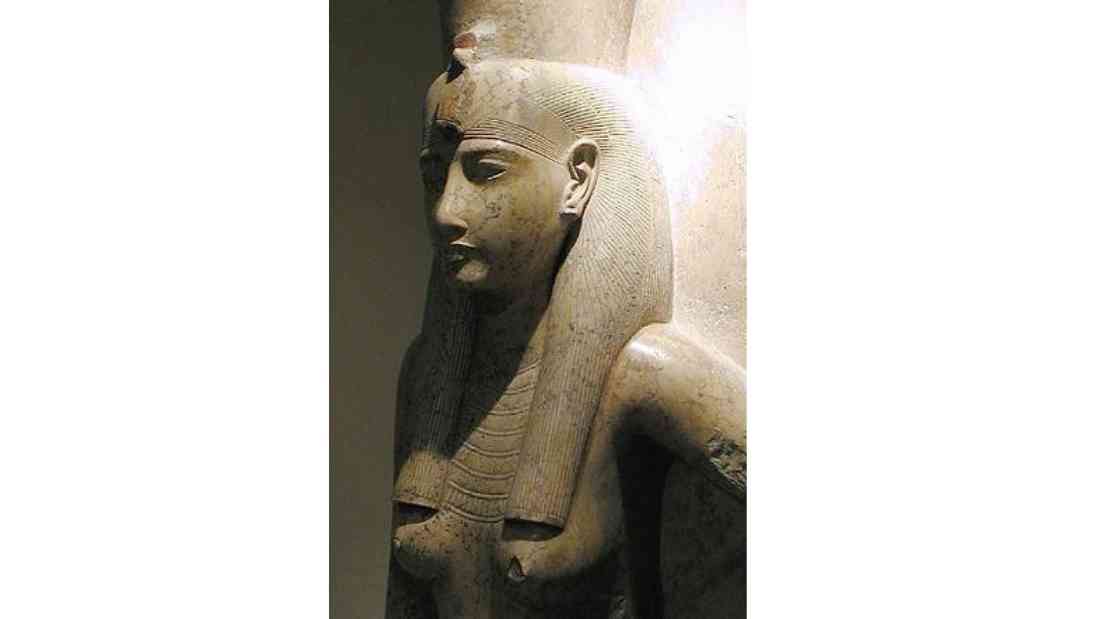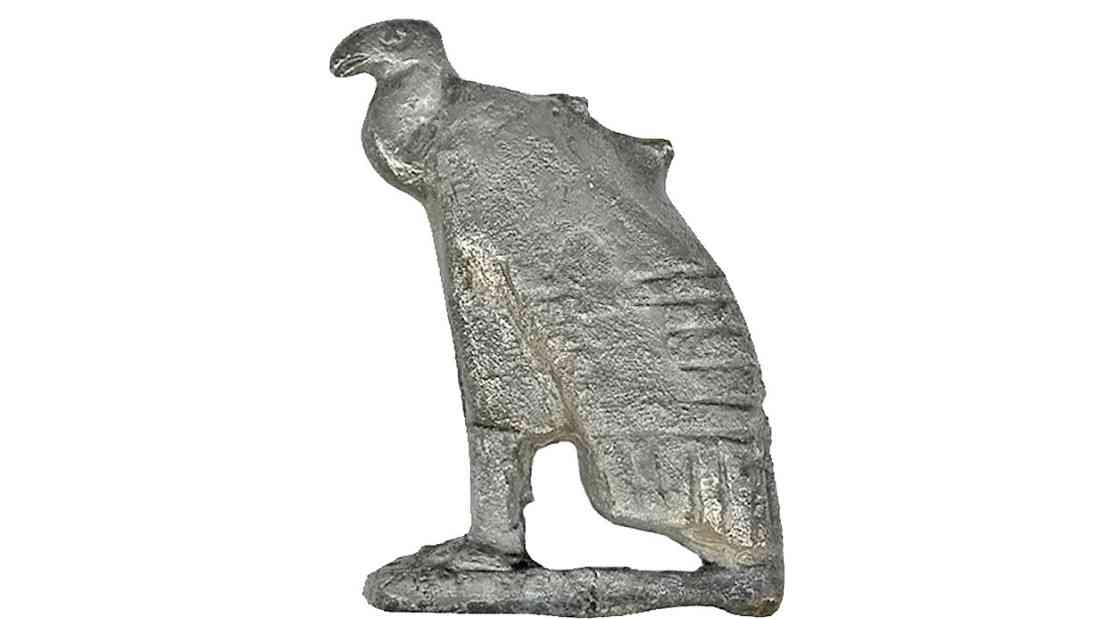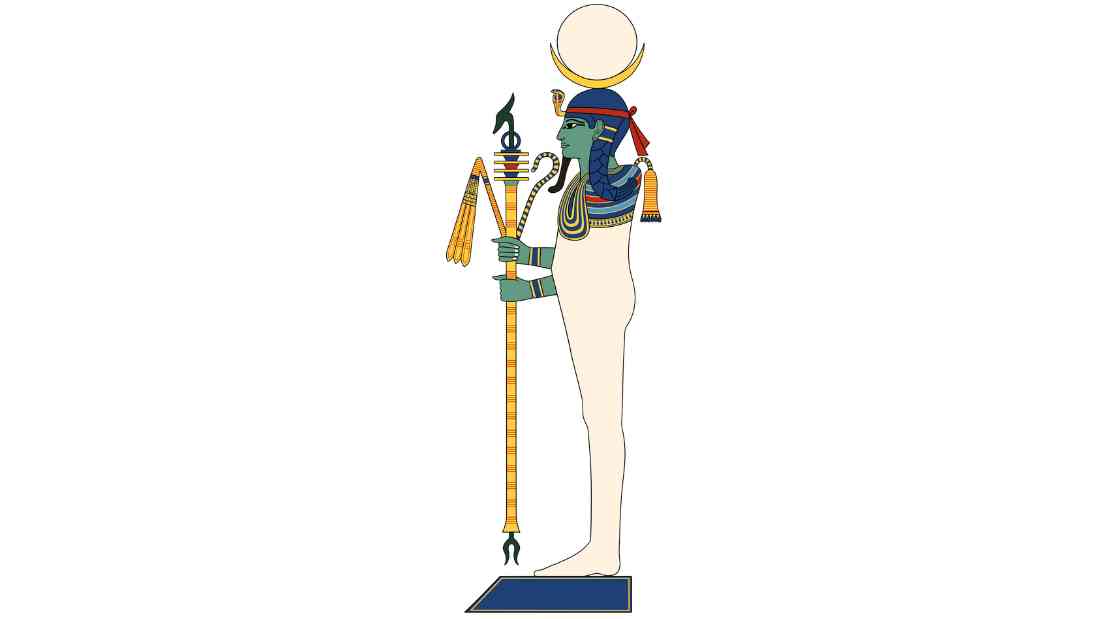The ancient Egyptian pantheon is replete with deities embodying diverse aspects of human life and the natural world. Among these divine figures, the goddess Mut stands as a paramount representation of maternal power and divine motherhood in Egyptian mythology.
Her influence, symbolism, and mythological significance illuminate her revered status as the mother goddess and queen of all gods in the ancient Egyptian belief system.

Origins and Attributes of Mut
The ancient Egyptian goddess Mut, whose name means “mother,” held a position of reverence and adoration in the hearts of the people, particularly in the majestic city of Waset, known today as Luxor.
As the consort of Amun, the chief deity of the Egyptian pantheon, Mut embodied the sacred union of maternal power and divine authority.
In artistic representations, Mut was often portrayed in two primary forms: as a vulture or as a regal woman adorned with the double crown of Upper and Lower Egypt.
This duality of her depiction symbolized both her nurturing and fierce maternal nature as well as her sovereign authority over the unified kingdom.
The vulture, an emblem of motherhood and protection, served as a poignant visual representation of Mut’s role as a guardian and nurturer, perpetuating the cosmic order and safeguarding all living beings under her watchful gaze.

Maternal Symbolism and Divine Providence
As the divine mother and queen of all gods, Mut was revered for her nurturing and protective qualities, symbolizing the ideal of maternal care and compassion.
She was frequently invoked by ancient Egyptians seeking blessings for childbirth, fertility, and family welfare.
Mut’s divine providence extended to all living beings, reflecting her encompassing role as a motherly figure in the cosmic order.
The Triad of Thebes: Mut, Amun, and Khonsu
The Triad of Thebes symbolized the essential forces of creation, preservation, and renewal but also reflected the harmonious balance inherent in the Egyptian worldview.
At the heart of this sacred trinity was the goddess Mut, whose association with Amun, the supreme deity, and their son Khonsu, epitomized the divine interplay of maternal power, cosmic sovereignty, and youthful vitality.
This sacred familial bond illuminated the cosmic tapestry of creation, preservation, and renewal, resonating deeply within the hearts and minds of the ancient Egyptians as they sought to comprehend the intricate web of existence.
The cult of the Triad of Thebes flourished within the temple complex at Karnak, where elaborate rituals and festivals honored the divine trio, underscoring their pivotal roles in maintaining cosmic harmony and sustaining the prosperity of the kingdom.
The influence of Mut as the matriarchal deity in this sacred triad further solidified her prominence in Egyptian religious practices, as her benevolent and protective nature permeated every aspect of life in ancient Thebes

The Role of the Goddess Mut in Egyptian Mythology and Royalty
Mut’s significance extended beyond her maternal symbolism; she was also closely linked to the divine legitimacy of the pharaohs.
In depictions of royal ceremonies and rituals, she was often portrayed as embracing the reigning monarch, symbolizing her role in legitimizing the king’s divine authority and right to rule.
This connection between Mut and royalty underscored her pivotal position in maintaining cosmic order and the prosperity of the kingdom.
Conclusion
In conclusion, the goddess Mut was the embodiment of maternal power, divine protection, and nurturing care in the rich tapestry of ancient Egyptian mythology.
Her importance as the mother goddess and queen of all gods exemplified the profound reverence accorded to motherhood and the eternal bond between the divine and the mortal realms in ancient Egypt.
Posts About the Egyptian Pantheon of Gods
The Pantheon of Ancient Egyptian Gods – A Comprehensive Guide
The Wrath of Montu – The Mythology of the Egyptian War God
Egyptian God Ammit – The Eater of Hearts in Ancient Egyptian Mythology
The Nightly Journey of Khonsu – The Ancient Egyptian God of the Moon
Ihy – The Joyful Ancient Egyptian God of Music
Min – The Ancient Egyptian God of Fertility
The Egyptian God Anubis – His Evolution from Son of Ra to Protector of the Dead
Unraveling the Mysteries of Babi – The Ancient Egyptian Baboon God
Ra, the Egyptian Sun God – Symbolism and Significance in Ancient Egyptian Culture
Sobek: The Ferocious Crocodile God of Ancient Egypt
The Enigmatic Mythology of Horus, the Egyptian Sky God
The Egyptian God Set – Protector of the Desert and Lord of Conflict
The Ancient Egyptian God Medjed: The Guardian of Osiris and the Afterlife
Anput, the Wife and Female Version of Anubis
Selket – The Scorpion Crowned Egyptian Goddess
Shu – The Egyptian God of Air, Wind, Peace and Lions
Hapi the Androgynous Ancient Egyptian God of the Nile
The Egyptian Sky Goddess Nut: Myth and Symbolism
The 42 Laws of Maat: The Moral Principles of the Ancient Egyptians
The Ancient Egyptian Goddess Mut: The Maternal Power in Egyptian Mythology
The Warrior Goddess: Neith in Ancient Egyptian Mythology
The God Bes: The Joyful Dwarf Deity in Ancient Egyptian Culture
The Egyptian Gods of Love: Hathor and Isis in Ancient Egyptian Mythology
Confronting the Serpent: The God Apep, the Nemesis of Ra in Egyptian Myth

